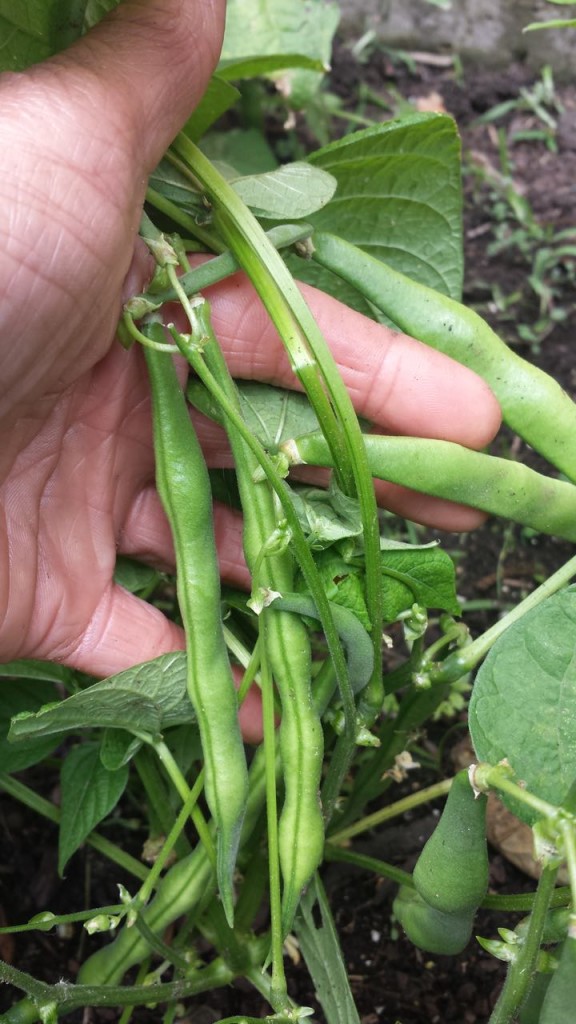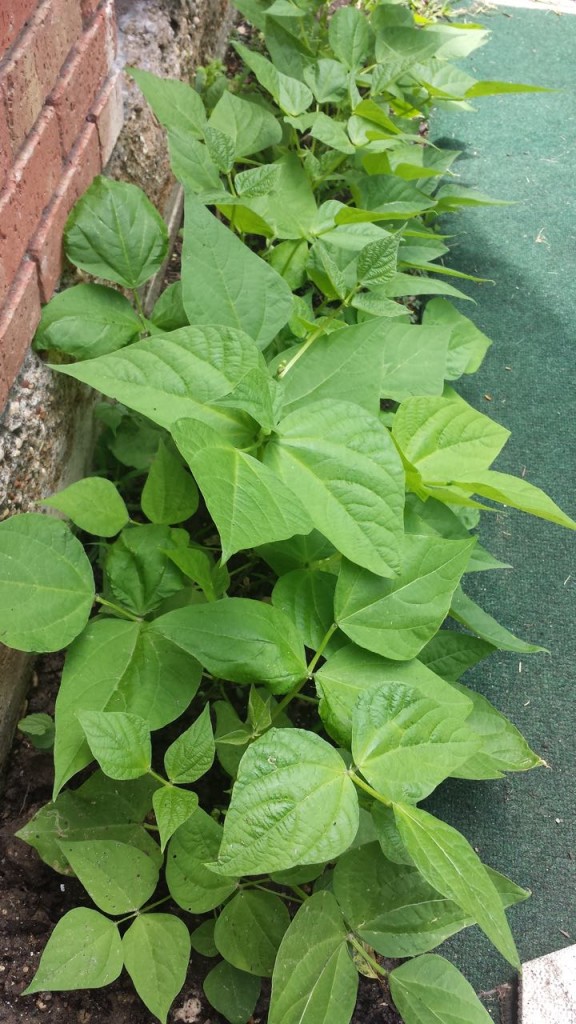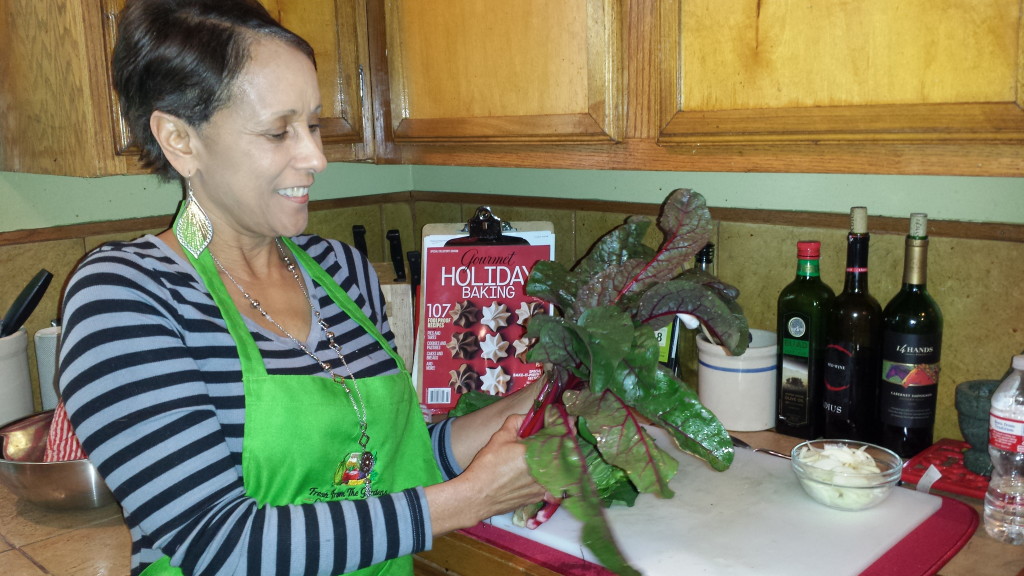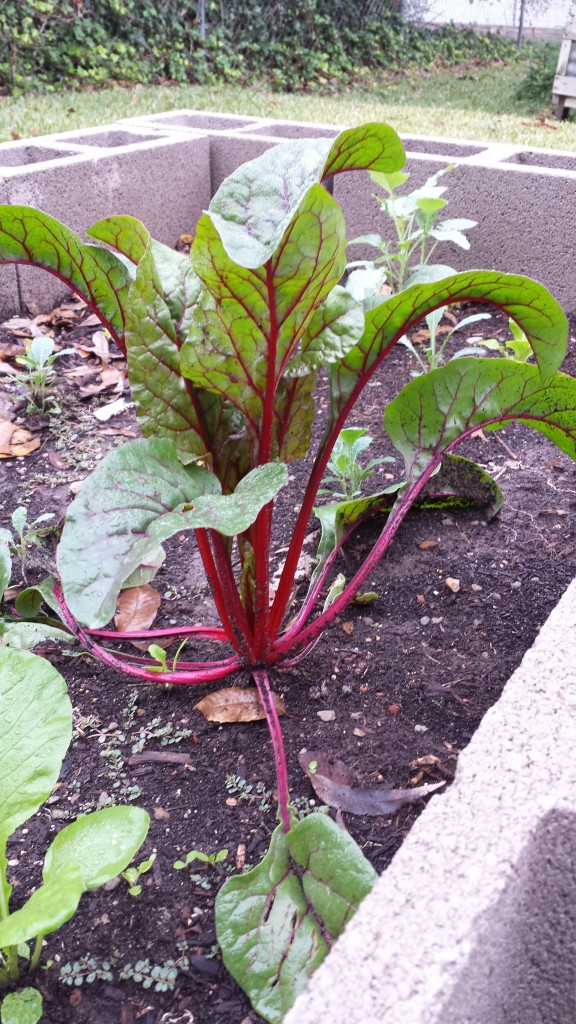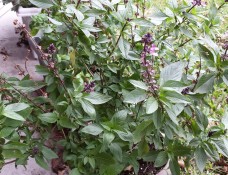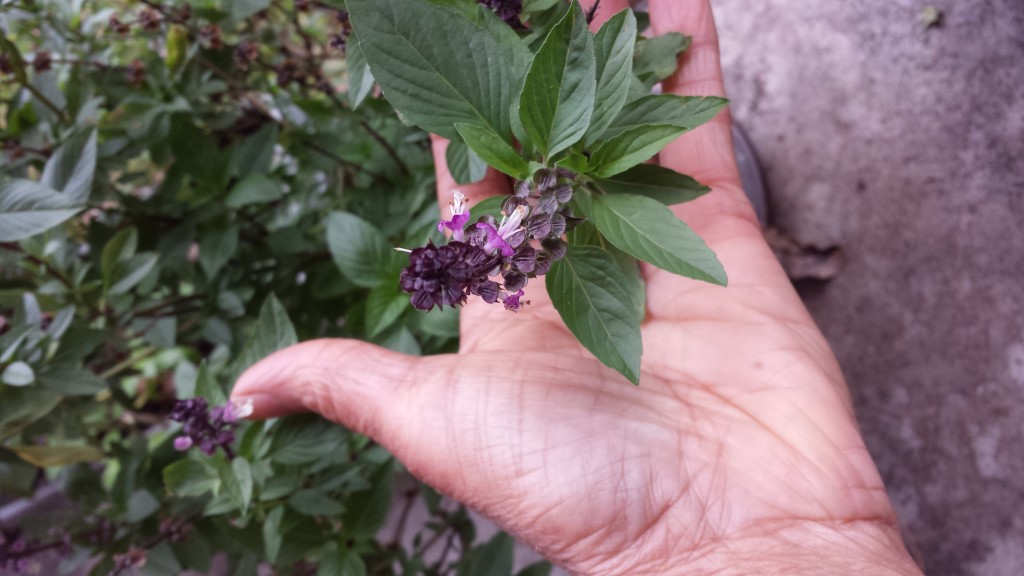
Fresh from the Gardens Green Beans
Growing and eating fresh green beans is something that was second nature to my family growing up. In fact, my dad’s garden is currently full of fresh green beans, and as you can see in my pictures, I am carrying on that same tradition in my own garden. I have great memories of sitting on my great-grandmother’s porch shelling bushels of peas. We always had a deep freezer, so anything that was not cooked, eaten or canned, was frozen and put away for the winter. When gardening season is over, I still purchase fresh green beans. My favorite green beans are the French Haricot Vert green beans. My clients love these too, and one of my favorite ways to prepare them is to just blanch them briefly for about 3-4 minutes and shock them in an ice bath. I then sauté them with a small amount of fresh garlic and toss them in a grainy mustard or Dijon mustard/shallot/red wine vinaigrette. Talk about good! Any fresh green beans can be prepared this way.
This year I ordered green bean seeds from Pinetree Garden Seeds http://www.superseeds.com. It’s become one of my favorite spots to find good organic seeds. I planted Black Valentine Green Bush beans and Bush Blue Lake Green beans. I prefer to plant bush green beans rather than pole green beans because I find them easier to maintain as they grow low to the ground in a small bush. Pole beans require a little more effort as you have to find something from them to climb onto.
Green beans are planted about an inch deep and are ready to harvest anywhere from about 49 to 55 days, depending on the variety of the bean. I planted the majority of my beans a week or two before April 1st and am picking some of them now. I planted more a few weeks later and they are blooming now. I plan to plant one more bunch of beans so that I will continue to have beans throughout the summer.
So what am I going to do with all of these wonderful “fresh” green beans?
- I will pressure can some of them and store them away for later in the season (can keep canned vegetables a year or more)
- I will make Spicy Dilly Beans (which taste like a crunchy pickle) – an excellent snack
- I will just cook them fresh and eat them!
Canning fresh green beans is easy. However, it’s very important that you use safe canning methods and understand the correct canning process for fresh vegetables. The National Center for Food Preservation is a good resource for canning safety. http://nchfp.uga.edu. Another good resource is the Ball Canning Guide.
If you want to learn more about canning and preserving in a fun learning environment, contact Fresh From the Gardens to schedule an in-home canning party. Class details are noted in the following link:
http://freshfromthegardens.com/canning-classes-2/
If you have a venue in the Dallas/ Fort Worth area that can accommodate your group, Chef Sandra is happy to come to your location.
Other Canning Offerings
Private one-on-one Private canning lessons. Get assistance with canning your own supply of fruit or vegetables from your garden or from a local farmer.

